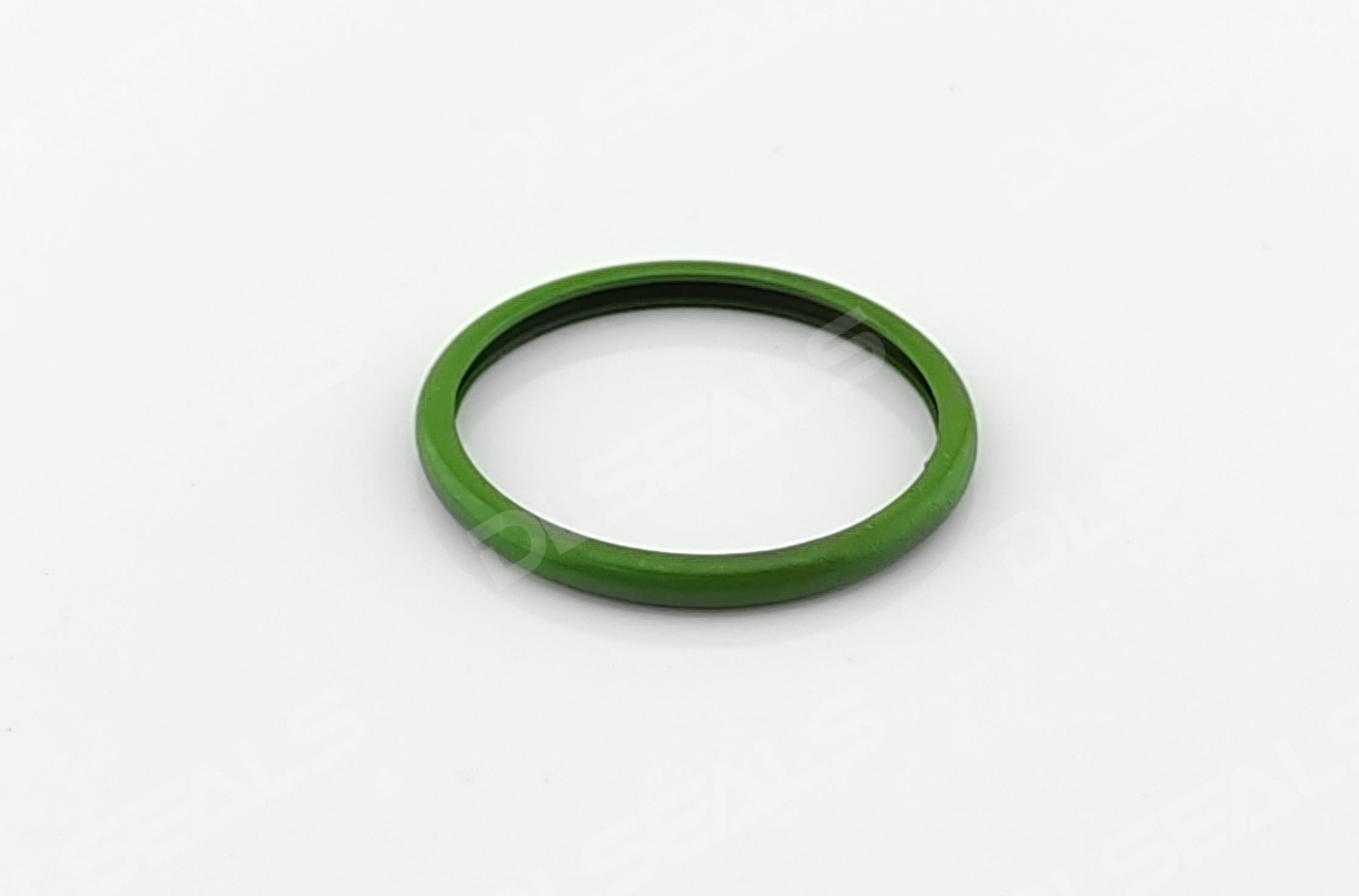In industrial equipment and precision instruments, sealing components serve as critical yet often overlooked guardians. They prevent fluid leakage, pressure loss, and contamination from external environments. Among these, metal gaskets are valued for their exceptional mechanical strength and pressure resistance. However, bare metal surfaces exhibit limitations in demanding applications. Applying a polytetrafluoroethylene (PTFE, commonly known as Teflon®) coating combines the structural integrity of metal with the surface properties of fluoropolymers, achieving an optimal synergy of rigidity and flexibility.
I. Limitations of Bare Metal Gaskets and the Development of PTFE Coating
Metal gaskets (e.g., stainless steel, copper, alloys) offer high strength, temperature resistance, and anti-creep performance. Nevertheless, they present inherent drawbacks:
- High Hardness and Required Sealing Force: Achieving an effective seal demands significant compression to deform the gasket and fill micro-imperfections in flanges or interfaces, imposing stringent design requirements.
- Susceptibility to Corrosion: Even corrosion-resistant alloys may experience pitting or crevice corrosion in aggressive chemical environments.
- Dependence on Surface Finish: Minor scratches or imperfections can lead to leakage.
- High Friction Coefficient: Metal-to-metal contact during installation and removal generates substantial friction, complicating assembly and risking surface damage.
To address these issues, PTFE coating technology was developed. This process deposits a thin (typically micron-scale), dense, and uniform PTFE layer onto the metal substrate, preserving its mechanical properties while enhancing surface functionality.
II. Key Benefits of PTFE-Plated Metal Gaskets
1. Superior Sealing and Minimal Leakage
PTFE exhibits exceptional plasticity and ductility. Under low bolt preload, the soft coating flows and deforms to fill microscopic flaws on sealing surfaces, ensuring highly reliable seals. This makes it ideal for vacuum systems and ultra-high-purity pipelines where leakage control is critical.
2. Outstanding Chemical Corrosion Resistance
PTFE, renowned as the “Plastic King,” resists virtually all strong acids, alkalis, organic solvents, and oxidizers. The inert coating shields the metal substrate from corrosive media, expanding the applicability of standard stainless steel gaskets in harsh chemical settings and reducing the need for costly high-alloy alternatives.
3. Non-Stick Properties and Low Friction
PTFE boasts one of the lowest friction coefficients among solid materials, offering two key advantages:
- Ease of Installation and Removal: The smooth surface reduces friction, lowering required installation torque and simplifying operations. It prevents sticking or cold-welding to flanges, avoiding damage during disassembly.
- Self-Cleaning Ability: The non-stick surface minimizes adhesion of viscous, curing, or particulate-laden media, reducing seal failure and maintenance needs.
4. Broad Temperature Tolerance
PTFE coatings operate reliably from -200°C to +260°C, enabling use in cryogenic (e.g., liquid nitrogen) and high-temperature (e.g., steam, hot oil) environments, thus meeting most industrial requirements.
5. Substrate and Equipment Protection
The PTFE layer not only safeguards the gasket against corrosion but also acts as a soft barrier, protecting flange and equipment surfaces from wear and scratches, thereby extending system lifespan.
III. Typical Applications
PTFE-plated metal gaskets are preferred in:
- Chemical and Pharmaceutical Industries: Reactors, pipelines, pumps, and valves handling corrosive chemicals or high-purity materials.
- Food and Beverage Sector: Sanitary piping and filling equipment compliant with food safety standards.
- Semiconductor and Vacuum Technology: Vacuum chambers and transfer systems demanding ultra-high cleanliness and minimal leakage.
- Aerospace and Automotive Industries: Hydraulic, fuel, and air systems subjected to harsh media and temperature variations.
Conclusion
PTFE plating on metal gaskets represents a significant performance enhancement rather than a mere surface treatment. It merges the rigidity of metal with the flexibility of PTFE, yielding synergistic benefits—retaining structural strength while gaining superior sealing, chemical resistance, and non-stick properties. This solution improves reliability and service life, reduces installation torque requirements, and diminishes the need for precise machining, ultimately contributing to safer, more efficient, and cost-effective industrial systems.
Post time: Sep-08-2025

